An anti-inflammatory diet is a way of eating that focuses on consuming whole, nutrient-dense foods that can help reduce inflammation in the body. Inflammation is the body’s natural response to injury or infection, but chronic inflammation can contribute to the development of many diseases, including heart disease, cancer, and diabetes. An anti-inflammatory diet can help lower the risk of these chronic diseases and improve overall health.
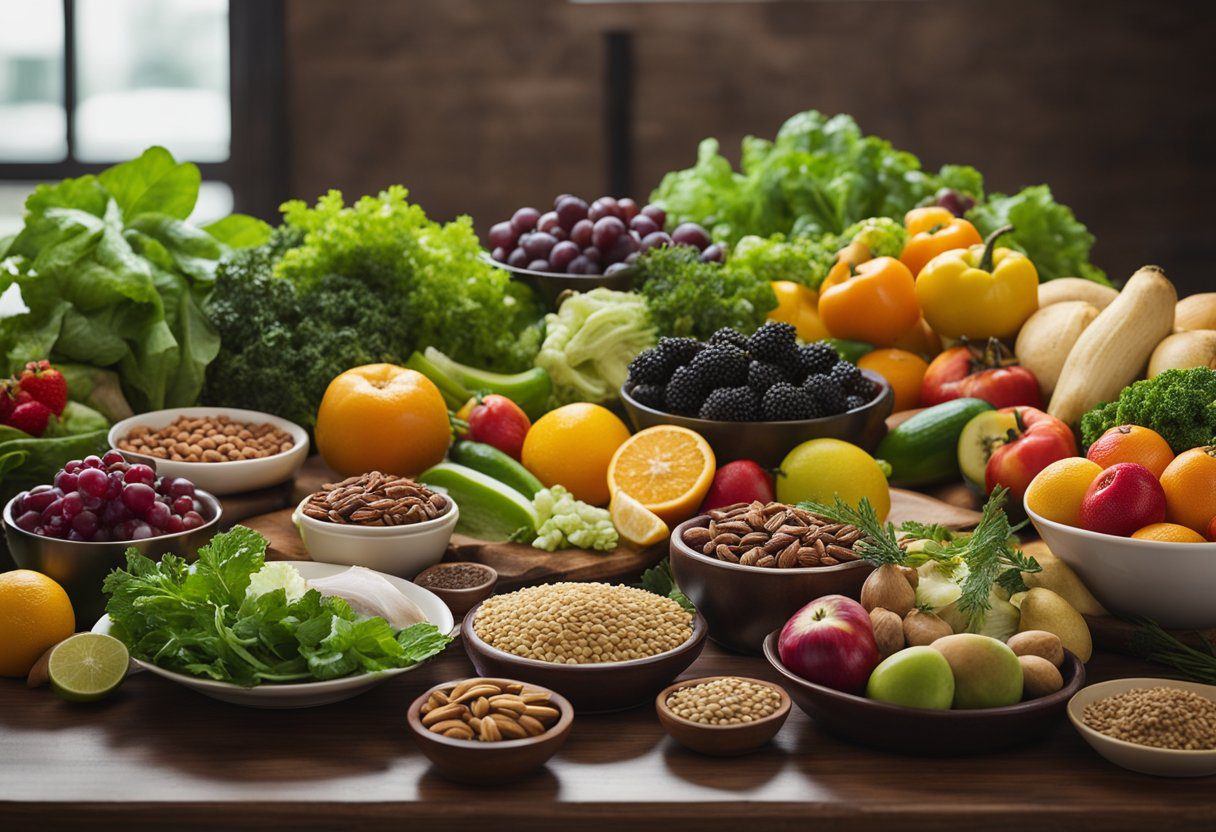
The fundamentals of an anti-inflammatory diet include consuming whole, minimally processed foods that are rich in nutrients and antioxidants. Specific anti-inflammatory foods include green leafy vegetables, berries, fatty fish, nuts, and seeds. On the other hand, foods to avoid include processed foods, refined carbohydrates, and sugary drinks. It is also important to consider lifestyle factors such as stress management, exercise, and sleep when following an anti-inflammatory diet.
Key Takeaways:
An anti-inflammatory diet reduces chronic inflammation by modulating molecular pathways including NF-κB and MAPK signaling, leading to measurable decreases in inflammatory biomarkers like C-reactive protein (CRP) and interleukin-6 (IL-6).
Recent 2025 meta-analyses show anti-inflammatory dietary patterns reduce systolic blood pressure by 3.99 mmHg, LDL cholesterol significantly, and inflammatory markers by clinically meaningful amounts[1[1],2[2]].
Omega-3 fatty acids at doses exceeding 2 grams of EPA+DHA daily produce specialized pro-resolving mediators (resolvins, protectins) that actively resolve inflammation rather than simply suppressing it[3[3],4[4],5[5]].
The Mediterranean diet, scoring 89/100 on American Heart Association guidelines, demonstrates a 28.7% reduction in rheumatoid arthritis risk and significant cardiovascular benefits in large clinical trials[6[6],7[7],8[8]].
Specific anti-inflammatory foods work synergistically through multiple mechanisms: polyphenols inhibit inflammatory transcription factors, omega-3s compete with omega-6 metabolism, and dietary fiber promotes beneficial gut bacteria that produce anti-inflammatory short-chain fatty acids[3[3],9[9],10[10]].
Implementation requires specific serving sizes: 3-4 oz fatty fish 3×/week, ¼ cup nuts daily, 1-4 tablespoons olive oil daily, and ≥3 servings vegetables per day to achieve therapeutic anti-inflammatory effects[11[11]].
Understanding Inflammation

Inflammation is a natural process that occurs in the body as a response to injury or infection. It is a complex process that involves the immune system, blood vessels, and various signaling molecules. The goal of inflammation is to remove harmful stimuli and initiate the healing process.
Acute vs. Chronic Inflammation: A Critical Distinction
While acute inflammation typically resolves within days to weeks following injury or infection, chronic inflammation persists for months or years and represents a fundamentally different biological state. Chronic low-grade inflammation, sometimes called “metaflammation,” is characterized by sustained elevation of inflammatory mediators at levels insufficient to cause obvious symptoms but high enough to contribute to tissue damage over time[12[12]]. The transition from acute to chronic inflammation occurs when resolution mechanisms fail. Recent research has revealed that inflammation resolution is not merely the absence of inflammatory signals but rather an active, coordinated biological process mediated by specialized molecules derived from omega-3 fatty acids and other dietary components[4[4],5[5]].
The Resolution Phase: An Active Process
A paradigm shift in inflammation science recognizes that resolution is an active process requiring specific biochemical mediators. **Specialized pro-resolving mediators (SPMs)**—including resolvins, protectins, and maresins—are produced from omega-3 fatty acids EPA and DHA through enzymatic conversion[4[4],5[5],13[13]].
These compounds actively:
– Stop neutrophil infiltration into inflamed tissues
– Enhance macrophage clearance of cellular debris and apoptotic cells
– Reduce production of pro-inflammatory cytokines (TNF-α, IL-1β, IL-6)
– Promote tissue regeneration and healing
– Reset the immune system to homeostasis Resolvin E1 (RvE1), derived from EPA, and the D-series resolvins from DHA represent evolutionary adaptations that prevent inflammation from becoming chronic[13[13]].
Deficiencies in SPM production pathways contribute to persistent inflammatory diseases. This discovery explains why dietary omega-3 fatty acids are not merely “anti-inflammatory” but actively “pro-resolving”—they provide the raw materials for the body’s natural inflammation resolution machinery[4[4],5[5]].
Understanding the Inflammatory Cascade
At the molecular level, inflammation involves a complex cascade of cellular signaling. When the body detects danger signals (pathogens, damaged cells, or metabolic stress), pattern recognition receptors activate transcription factors—most notably nuclear factor kappa B (NF-κB) and activator protein 1 (AP-1)[14[14],15[15]]. These transcription factors enter the cell nucleus and upregulate genes encoding:
– Pro-inflammatory cytokines: TNF-α, IL-1β, IL-6, IL-8
– Inflammatory enzymes: Cyclooxygenase-2 (COX-2), lipoxygenases (LOX), inducible nitric oxide synthase (iNOS)
– Adhesion molecules: ICAM-1, VCAM-1 that recruit immune cells
– Acute phase proteins: C-reactive protein (CRP), serum amyloid A
The arachidonic acid cascade represents another critical pathway[16[10],17[16]]. Arachidonic acid (an omega-6 fatty acid) is released from cell membranes and metabolized by COX and LOX enzymes into prostaglandins, thromboxanes, and leukotrienes—potent inflammatory mediators. Dietary choices profoundly influence this cascade: omega-6-rich diets provide excess substrate for inflammatory eicosanoid production, while omega-3 fatty acids compete for the same enzymes, producing less inflammatory or actively anti-inflammatory products[3[3],16[10]].
Inflammatory Foods
Certain foods can contribute to inflammation in the body. These include processed foods, sugary drinks, and foods high in saturated and trans fats. These foods can promote the production of inflammatory molecules in the body, leading to chronic inflammation.
Anti-Inflammatory Effects
On the other hand, some foods have anti-inflammatory effects. These include fruits, vegetables, whole grains, nuts, and fatty fish. These foods contain antioxidants, vitamins, and minerals that can help reduce inflammation in the body.
Overall, understanding inflammation is crucial for maintaining good health. By avoiding inflammatory foods and incorporating anti-inflammatory foods into the diet, individuals can reduce the risk of chronic inflammation and associated diseases.
Inflammatory Biomarkers: What They Mean
Measuring inflammation objectively requires laboratory testing of specific biomarkers—molecules in the blood that reflect inflammatory activity. Understanding these markers helps individuals and healthcare providers assess inflammation levels, track dietary intervention effectiveness, and predict disease risk.
C-Reactive Protein (CRP)
C-reactive protein is the most widely used inflammatory biomarker in clinical practice. Produced by the liver in response to IL-6 signaling, CRP levels rise rapidly during inflammation and decline when inflammation resolves[18[17],2[2]].
Reference Ranges:
– Low risk: <1.0 mg/L
– Moderate risk: 1.0-3.0 mg/L
– High risk: >3.0 mg/L
High-sensitivity CRP (hs-CRP) testing detects even slight elevations associated with cardiovascular disease risk. A 2025 meta-analysis of 18 randomized controlled trials found that anti-inflammatory dietary patterns reduce hs-CRP with a standardized mean difference of -0.16 (95% CI: -0.31 to -0.00, p=0.04)[1]. The Mediterranean diet specifically reduces CRP by an average of 1.00 mg/L (95% CI: -2.02, 0.01), potentially moving individuals from high-risk to moderate-risk categories[2[2]].
Interleukin-6 (IL-6)
Interleukin-6 is a pro-inflammatory cytokine that plays central roles in acute phase responses, immune cell activation, and chronic disease pathogenesis. Elevated IL-6 correlates with increased mortality risk—one study found that IL-6 levels above the median were associated with a 3.5-fold increased risk of 30-day mortality (hazard ratio 3.5, 95% CI 1.95-6.28)[18]. A systematic review of 22 randomized controlled trials demonstrated that the Mediterranean diet reduces IL-6 by 1.07 pg/mL (95% CI: -1.94, -0.20)[2]. This effect size, while appearing modest numerically, represents a clinically significant reduction in inflammatory burden over time.
Normal Range: Generally <5 pg/mL, though reference ranges vary by laboratory and population.
Tumor Necrosis Factor-Alpha (TNF-α)
TNF-α is a potent pro-inflammatory cytokine that activates NF-κB signaling, promotes insulin resistance, and contributes to autoimmune disease pathology[19[18]]. Anti-inflammatory diets rich in polyphenols can reduce TNF-α production by inhibiting upstream signaling pathways[9[9],20[19]].
Interleukin-1 Beta (IL-1β)
IL-1β drives fever responses and is implicated in autoinflammatory syndromes. Meta-analytic evidence shows Mediterranean diet adherence reduces IL-1β by 0.46 pg/mL (95% CI: -0.66, -0.25)—a reduction that may attenuate inflammatory disease progression[2[2]].
When to Test Inflammatory Biomarkers
Baseline Testing: Before implementing dietary changes, establish baseline inflammatory status. This provides a reference point for measuring progress.
Follow-up Testing: Retest 3-6 months after dietary intervention. Inflammatory markers typically require 12-16 weeks to respond to dietary changes, as cell membrane fatty acid composition gradually shifts and metabolic adaptations occur[3[3]].
Ongoing Monitoring: For individuals with chronic inflammatory conditions (cardiovascular disease, rheumatoid arthritis, inflammatory bowel disease), annual or semi-annual monitoring helps ensure dietary strategies remain effective.
Fundamentals of an Anti-Inflammatory Diet
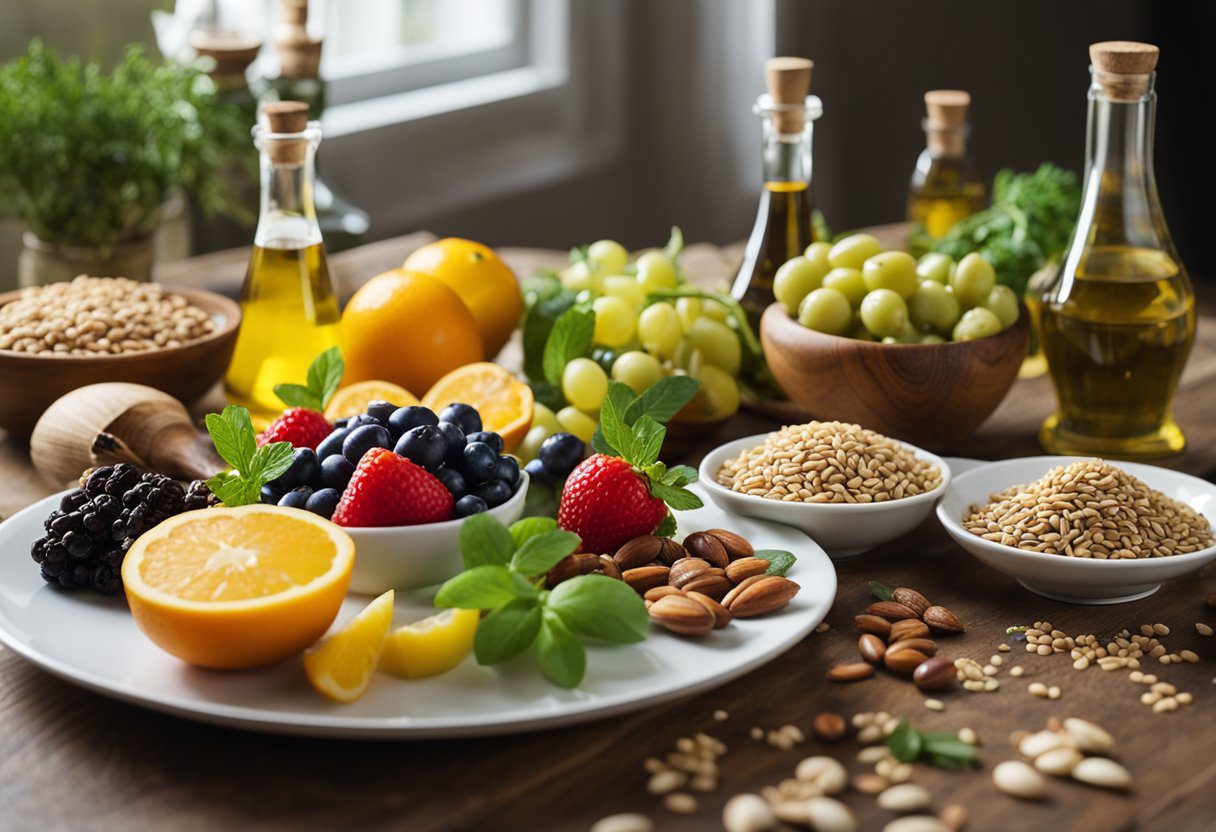
An anti-inflammatory diet is a way of eating that focuses on whole, unprocessed foods that are known to reduce inflammation in the body. This type of diet has gained popularity in recent years due to its potential health benefits, including a reduced risk of chronic diseases such as heart disease, diabetes, and cancer.
Whole Foods
One of the key principles of an anti-inflammatory diet is to eat whole, unprocessed foods as much as possible. This means avoiding packaged and processed foods that are high in added sugars, unhealthy fats, and artificial ingredients. Instead, focus on whole foods that are rich in nutrients and fiber.
Fruits and Vegetables
Fruits and vegetables are a cornerstone of an anti-inflammatory diet. They are rich in antioxidants, vitamins, and minerals that can help reduce inflammation in the body. Some of the best anti-inflammatory fruits and vegetables include berries, leafy greens, broccoli, carrots, and sweet potatoes.
Healthy Fats
Healthy fats are an important part of an anti-inflammatory diet. They help reduce inflammation in the body and can improve heart health. Some of the best sources of healthy fats include olive oil, nuts, seeds, and fatty fish like salmon.
In addition to these key principles, an anti-inflammatory diet may also include other foods that are known to reduce inflammation, such as whole grains, fiber, and protein. The Mediterranean diet is one example of an anti-inflammatory diet that emphasizes whole foods, healthy fats, and plenty of fruits and vegetables. By following these principles, individuals can improve their overall health and reduce their risk of chronic diseases.
Specific Anti-Inflammatory Foods
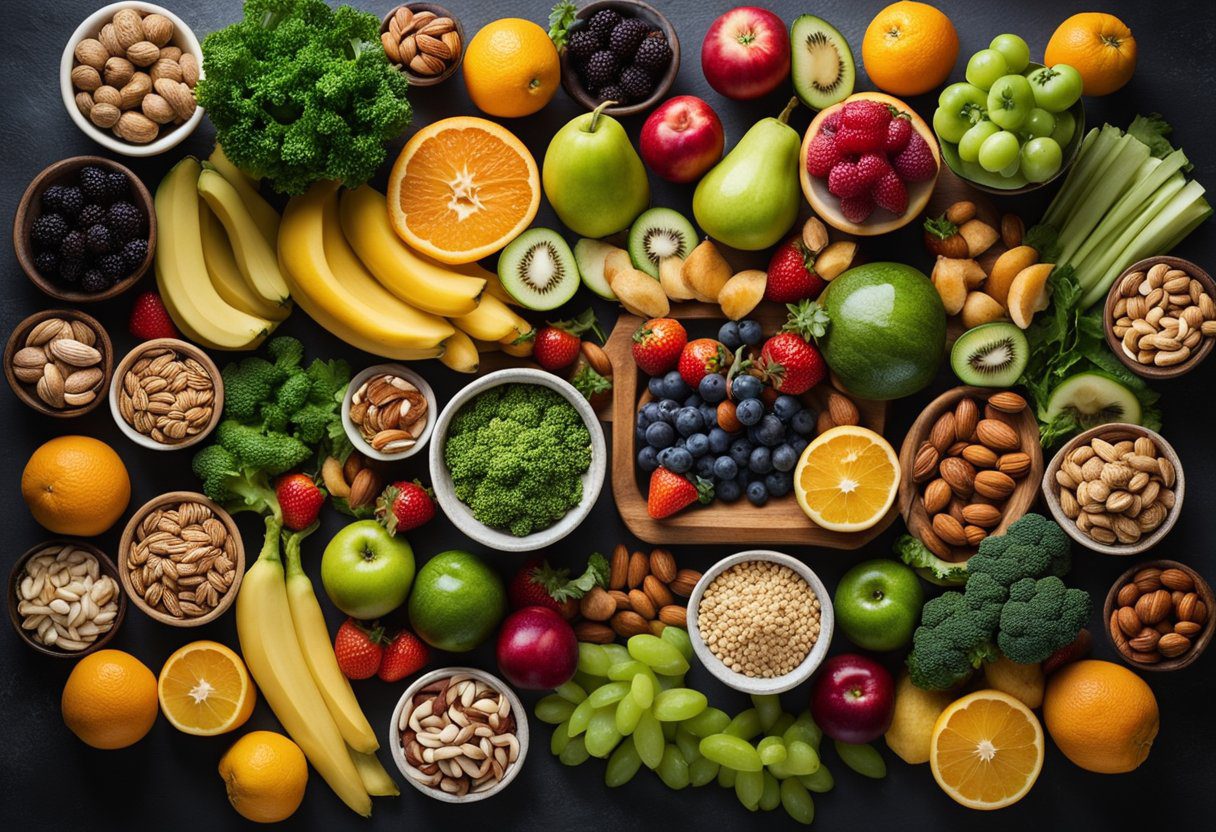
An anti-inflammatory diet consists of foods that reduce inflammation in the body. Here are some of the most effective anti-inflammatory foods:
Omega-3 Rich Fish
Fish rich in omega-3 fatty acids represent the most potent dietary source of EPA (eicosapentaenoic acid) and DHA (docosahexaenoic acid)—long-chain omega-3 fatty acids with profound anti-inflammatory properties. Unlike plant-based omega-3 alpha-linolenic acid (ALA), EPA and DHA are directly bioavailable and efficiently incorporated into cell membranes and converted to bioactive metabolites.
Evidence-Based Omega-3 Dosing
Clinical trials establish clear dose-response relationships between omega-3 intake and inflammatory outcomes:
Threshold for Anti-Inflammatory Effects: Research demonstrates that doses exceeding 2 grams of combined EPA+DHA daily are necessary to significantly affect inflammatory processes[3[3]]. Below this threshold, effects on inflammatory biomarkers and clinical outcomes are minimal or absent.
Rheumatoid Arthritis Studies: Clinical trials in RA patients used doses ranging from 1.5-7 grams daily (average 3.5 g/day) over 3-12 months[3[3]]. Studies meeting the 2+ gram threshold showed:
– Reduced morning stiffness duration
– Decreased number of tender joints
– Lower NSAID requirements
– Improved patient global assessments
General Anti-Inflammatory Recommendation: 2-4 grams EPA+DHA daily for individuals with chronic inflammatory conditions; 1-2 grams daily for prevention and general health maintenance[21[20]].
Mechanisms of Omega-3 Anti-Inflammatory Action
Omega-3 fatty acids modulate inflammation through multiple interconnected pathways: Cell Membrane Incorporation: EPA and DHA integrate into cell membrane phospholipids, displacing arachidonic acid. This shift alters membrane fluidity, lipid raft composition, and cellular signaling, reducing inflammatory responses[3[3]].
Eicosanoid Modulation: When omega-3s occupy membrane positions, they serve as substrates for COX and LOX enzymes instead of arachidonic acid, producing 3-series prostaglandins and 5-series leukotrienes (less inflammatory than arachidonic acid-derived 2-series and 4-series)[16[10],22[21]].
SPM Production: EPA and DHA undergo enzymatic conversion by lipoxygenases to produce specialized pro-resolving mediators[4[4],5[5],13[13]]:
– Resolvins (RvE1, RvE2 from EPA; RvD1-D6 from DHA) stop neutrophil infiltration and enhance macrophage clearance of debris
– Protectins (especially neuroprotectin D1) protect neural tissue and reduce inflammatory signaling
– Maresins enhance macrophage phagocytosis and accelerate resolution These SPMs don’t merely suppress inflammation—they actively orchestrate resolution, representing the body’s built-in anti-inflammatory machinery[5[5],23[22]].
NF-κB Pathway Suppression: Omega-3s inhibit activation of NF-κB, the master inflammatory transcription factor, reducing expression of COX-2, cytokines, and other inflammatory mediators[14[14]].
Best Food Sources with EPA+DHA Content
To achieve 2-4 grams EPA+DHA daily through food, consider these top sources:
| Fish (3-4 oz cooked) | EPA+DHA Content | Servings for 2g Target |
|---|---|---|
| Salmon (Atlantic, farmed) | 1.8-2.5 g | 1 serving |
| Salmon (wild sockeye) | 1.2-1.5 g | 2 servings |
| Sardines (canned in oil) | 1.3-1.7 g | 2 servings |
| Mackerel (Atlantic) | 1.0-1.6 g | 2 servings |
| Herring | 1.7-2.0 g | 1-2 servings |
| Anchovies | 1.4-1.7 g | 2 servings |
| Rainbow trout (farmed) | 1.0-1.2 g | 2-3 servings |
| Albacore tuna | 0.7-1.5 g | 2-3 servings |
Practical Implementation: Consuming 3-4 ounces of fatty fish 3-4 times per week provides approximately 2-3 grams EPA+DHA daily on average. For individuals unable to consume fish regularly, high-quality fish oil or algae-based omega-3 supplements can achieve therapeutic doses.
Timeline for Effects: Omega-3 anti-inflammatory effects emerge gradually:
– 2-4 weeks: Cell membrane EPA+DHA levels begin increasing
– 8-12 weeks: Inflammatory biomarker changes become detectable
– 3-6 months: Clinical symptom improvements apparent in inflammatory conditions[3]
Nuts and Seeds
Nuts and seeds are a great source of healthy fats, protein, and fiber. They also contain antioxidants and other anti-inflammatory compounds. Walnuts, almonds, chia seeds, and flaxseeds are all excellent choices for an anti-inflammatory diet.
Antioxidant-Rich Berries
Berries are packed with antioxidants, which help to reduce inflammation and protect against chronic diseases. Blueberries, raspberries, strawberries, and blackberries are all great choices for an anti-inflammatory diet. They are also low in calories and high in fiber, making them a great snack option.
Spices and Herbs
Spices and herbs are a great way to add flavor to your meals while also providing anti-inflammatory benefits.
Turmeric and Curcumin: Bioavailability Breakthrough
Turmeric (Curcuma longa) is widely recognized for its anti-inflammatory effects, largely due to its active compound curcumin[12[12]]. Curcumin modulates inflammation through several mechanisms, including direct inhibition of NF-κB, COX-2, and pro-inflammatory cytokines[13[13]]. However, pure curcumin has exceptionally poor oral bioavailability:
– Very little is absorbed in the gut
– Rapid metabolism and elimination. Solution: Pair curcumin with piperine (black pepper)!
– 2,000% increase in curcumin blood levels when taken with 20 mg piperine[14[14]]
– Mechanism: piperine blocks curcumin breakdown in the liver and gut, allowing more to enter the bloodstream
Evidence-based dosing:
– Curcumin: 500–2000 mg daily
– Piperine: 5–20 mg daily (approx ¼–½ teaspoon black pepper)
– Golden milk (turmeric, black pepper, healthy fat) or supplements with both included are most effective. Safety note: Both turmeric and curcumin are considered safe for daily use at culinary amounts; doses above 2g per day may interact with blood thinners. Always consult a healthcare provider before high-dose supplementation[15[15]].
Incorporating these specific anti-inflammatory foods into your diet can help reduce inflammation, improve heart health, and protect against chronic diseases.
Foods to Avoid
An anti-inflammatory diet involves avoiding certain foods that can trigger inflammation in the body. Here are some of the foods that should be avoided:
Processed and Red Meats
Processed meats such as hot dogs, sausages, and bacon contain high amounts of saturated fats and sodium, which can contribute to inflammation and increase the risk of heart disease. Red meats such as beef, pork, and lamb can also trigger inflammation in the body due to their high levels of saturated fats.
Refined Carbs and Sugars
Refined carbohydrates such as white bread, white rice, and pasta can cause a spike in blood sugar levels, leading to inflammation in the body. Sugary foods and drinks such as candy, soda, and energy drinks can also contribute to inflammation and increase the risk of chronic diseases such as diabetes.
Dairy and Fried Foods
Dairy products such as cheese and butter can cause inflammation in the body due to their high levels of saturated fats. Fried foods such as French fries, fried chicken, and donuts contain trans fats, which can increase inflammation and contribute to the development of chronic diseases.
By avoiding these foods and choosing whole, unprocessed foods instead, individuals can reduce inflammation in the body and improve their overall health.
Diet and Chronic Diseases

A diet rich in anti-inflammatory foods can help reduce the risk of chronic diseases such as heart disease, cancer, arthritis, and diabetes. Inflammation plays a significant role in the development and progression of these diseases, and a diet that promotes inflammation can worsen the symptoms.
Heart Disease and Diabetes
Recent evidence demonstrates significant impacts of anti-inflammatory dietary patterns on the risk and management of heart disease and diabetes[1[1],2[2]]:
– In 18 randomized trials, the Mediterranean and DASH diets reduced systolic blood pressure by 3.99 mmHg (corresponding to up to 14% lower stroke risk)[1[1]].
– Inflammatory markers (CRP, IL-6) drop markedly within 8–12 weeks of anti-inflammatory eating[2[2]].
– Higher-fiber intake (30–40g/day), consistent omega-3 dosing (>2g EPA/DHA/day), and polyphenol-rich foods are linked with improved blood glucose and lower cardiovascular risk[3[3],9[9]].
Arthritis and Autoimmune Conditions
Chronic inflammatory diseases like rheumatoid arthritis benefit from dietary modulation[6[6]]: – The UK Biobank study (117,341 participants; 9.42-year follow-up) found highest Mediterranean diet adherence conferred a 28.7% lower RA risk (HR = 0.713)[6[6]].
– Omega-3 supplementation above 2g/day in rheumatoid arthritis reduces joint stiffness, pain, and medication use[3[3],11[11]].
– Plant-rich diets and omega-3s shift immune balance away from autoimmunity, partly by fostering anti-inflammatory gut bacteria[16[10]].
Key strategies:
– Maintain consistent fatty fish intake or use evidence-based fish oil.
– Emphasize plant diversity for microbiome health.
– Avoid processed foods, excess omega-6 oils, red meat, and refined grains.
Cancer Prevention
Inflammation has also been linked to the development of cancer. A diet rich in anti-inflammatory foods can help reduce the risk of cancer by reducing chronic inflammation in the body.
Foods that are high in antioxidants, such as berries and leafy green vegetables, have been shown to have anti-cancer properties. Consuming a diet rich in these foods can help reduce the risk of cancer.
In conclusion, adopting an anti-inflammatory diet can have significant benefits for overall health and reduce the risk of chronic diseases. Incorporating a variety of fruits, vegetables, whole grains, nuts, and fatty fish into the diet can help reduce inflammation and improve health outcomes.
The Gut Microbiome–Inflammation Connection
Modern evidence shows that the gut microbiome—trillions of bacteria living in the intestine—regulates immune function, metabolic health, and systemic inflammation[16[10]]. Anti-inflammatory diets work in part by fostering beneficial bacterial populations that produce anti-inflammatory metabolites.
How Diet Shapes the Microbiome
– Fiber from vegetables, fruits, legumes feeds bacteria that convert it to short-chain fatty acids (SCFAs), especially butyrate, which blocks NF-κB and lowers inflammatory cytokines[17[16]].
– Polyphenols (berries, green tea, olive oil) increase the diversity and abundance of bacteria like Faecalibacterium prausnitzii and Akkermansia muciniphila, which strengthen the gut barrier and lower systemic inflammation[18[17],19[18]].
– DII (Dietary Inflammatory Index) scores correlate: higher DII diets (processed foods, low fiber) decrease beneficial bacteria and raise inflammatory markers (CRP, IL-6)[20[19]].
Practical Tips
– Eat 30+ different plant foods per week for best microbial diversity[21[20]].
– Incorporate fermented foods (yogurt, kefir, kimchi, sauerkraut) for live beneficial bacteria. – Limit ultra-processed foods and artificial sweeteners, as both harm beneficial bacteria. Clinical impact: Improved gut microbiome composition is directly associated with reduced inflammation and improved health outcomes in studies lasting as little as 2–4 weeks[19[18]].
Lifestyle Considerations

When it comes to reducing inflammation, diet is only one piece of the puzzle. Lifestyle factors such as sleep, hydration, stress reduction, and physical activity also play a crucial role in promoting overall health and reducing inflammation.
Importance of Sleep and Hydration
Getting enough sleep and staying hydrated are two lifestyle factors that are often overlooked but are essential for reducing inflammation. Lack of sleep can lead to increased inflammation in the body, as well as other health problems such as weight gain and a weakened immune system. It is recommended that adults get at least 7-9 hours of sleep per night.
Staying hydrated is also important for reducing inflammation. Dehydration can lead to an increase in inflammation markers in the body, as well as other health problems such as headaches and fatigue. It is recommended that adults drink at least 8-10 cups of water per day.
Stress Reduction
Stress is a common trigger for inflammation in the body. Chronic stress can lead to increased inflammation, as well as other health problems such as anxiety and depression. Finding ways to manage stress, such as through meditation, yoga, or deep breathing exercises, can help reduce inflammation and promote overall health.
Physical Activity
Regular physical activity is another important factor in reducing inflammation. Exercise has been shown to reduce inflammation markers in the body, as well as improve overall health and well-being. It is recommended that adults get at least 150 minutes of moderate-intensity exercise per week, such as brisk walking or cycling.
Incorporating these lifestyle factors into one’s daily routine can help reduce inflammation and promote overall health. By getting enough sleep, staying hydrated, managing stress, and engaging in regular physical activity, individuals can take control of their health and reduce their risk of chronic diseases associated with inflammation, such as obesity, diabetes, and heart disease.
Supplemental Support: When to Consider Supplements
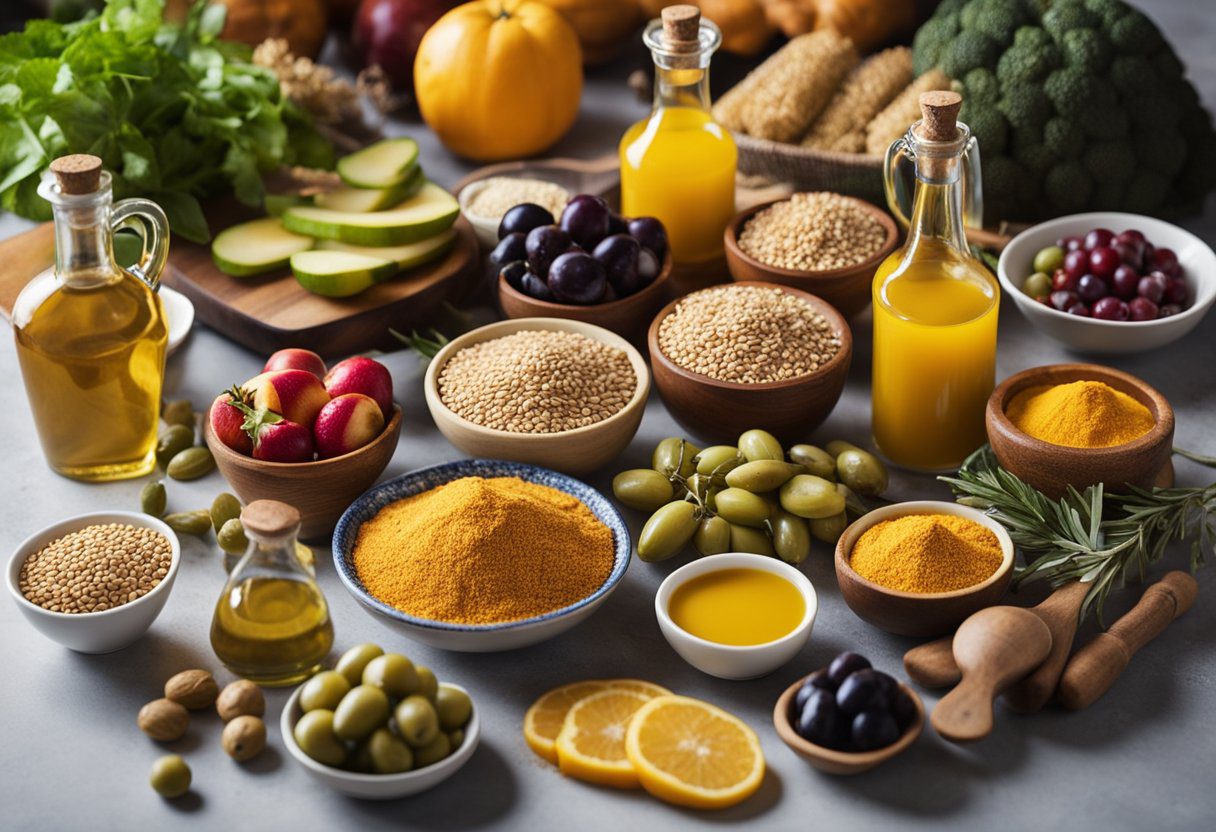
– Omega-3: If you do not eat fatty fish 2–3×/week, supplement with 1–2g EPA+DHA daily (choose a USP/NSF-verified capsule)[3[3],11[11]].
– Curcumin: 500–2000mg highly bioavailable curcumin with 5–20mg piperine (black pepper extract) if you cannot consume it daily through food; best effects for joint pain[13[13],14[14]].
– Vitamin D: 1000–2000 IU/day for most adults to keep blood levels >30 ng/mL, especially if living in northern latitudes or with limited sun[15[15]].
– Probiotics: If gut health is compromised (antibiotics, IBD), consider a multispecies probiotic (Lactobacillus, Bifidobacterium) for 2–12 weeks[17[16]].
– Quality matters: Only use third-party tested brands (USP, NSF). Stop 2 weeks before surgery or if starting new blood thinners; always consult your healthcare provider first.
– Never substitute supplements for food! They are an adjunct to—not a replacement for—an anti-inflammatory meal pattern[3[3],11[11]].
In conclusion, while an anti-inflammatory diet is an excellent way to reduce inflammation in the body, some people may require additional support. Vitamins and supplements, as well as functional foods and beverages, may be beneficial. However, it is important to use supplements under the guidance of a healthcare professional and to consume functional foods and beverages in moderation.
Dietary Patterns and Variations

When it comes to anti-inflammatory diets, there are several dietary patterns and variations that individuals can choose from. These dietary patterns and variations include vegetarian and vegan options, as well as the DASH and Mediterranean diets.
Vegetarian and Vegan Options
Vegetarian and vegan diets are plant-based diets that are rich in anti-inflammatory foods such as fruits, vegetables, whole grains, nuts, and seeds. Vegetarian diets exclude meat, poultry, and fish, while vegan diets exclude all animal products including dairy and eggs.
Studies have shown that vegetarian and vegan diets can help reduce inflammation in the body. A study published in the Journal of Nutrition found that a vegan diet reduced inflammation markers in overweight adults.
The DASH and Mediterranean Diets
The DASH (Dietary Approaches to Stop Hypertension) and Mediterranean diets are two popular dietary plans that emphasize anti-inflammatory foods.
The DASH diet emphasizes fruits, vegetables, whole grains, lean protein, and low-fat dairy products. It also recommends limiting foods that are high in saturated fat, cholesterol, and sodium. Studies have shown that the DASH diet can help reduce inflammation in the body.
The Mediterranean diet is a plant-based diet that emphasizes fruits, vegetables, whole grains, legumes, nuts, and seeds. It also includes moderate amounts of fish, poultry, and dairy products. The Mediterranean diet is rich in anti-inflammatory foods such as olive oil, fatty fish, and nuts. Studies have shown that the Mediterranean diet can help reduce inflammation in the body.
In conclusion, there are several dietary patterns and variations that individuals can choose from when it comes to anti-inflammatory diets. Vegetarian and vegan diets, as well as the DASH and Mediterranean diets, are all effective options for reducing inflammation in the body.
Implementing the Diet
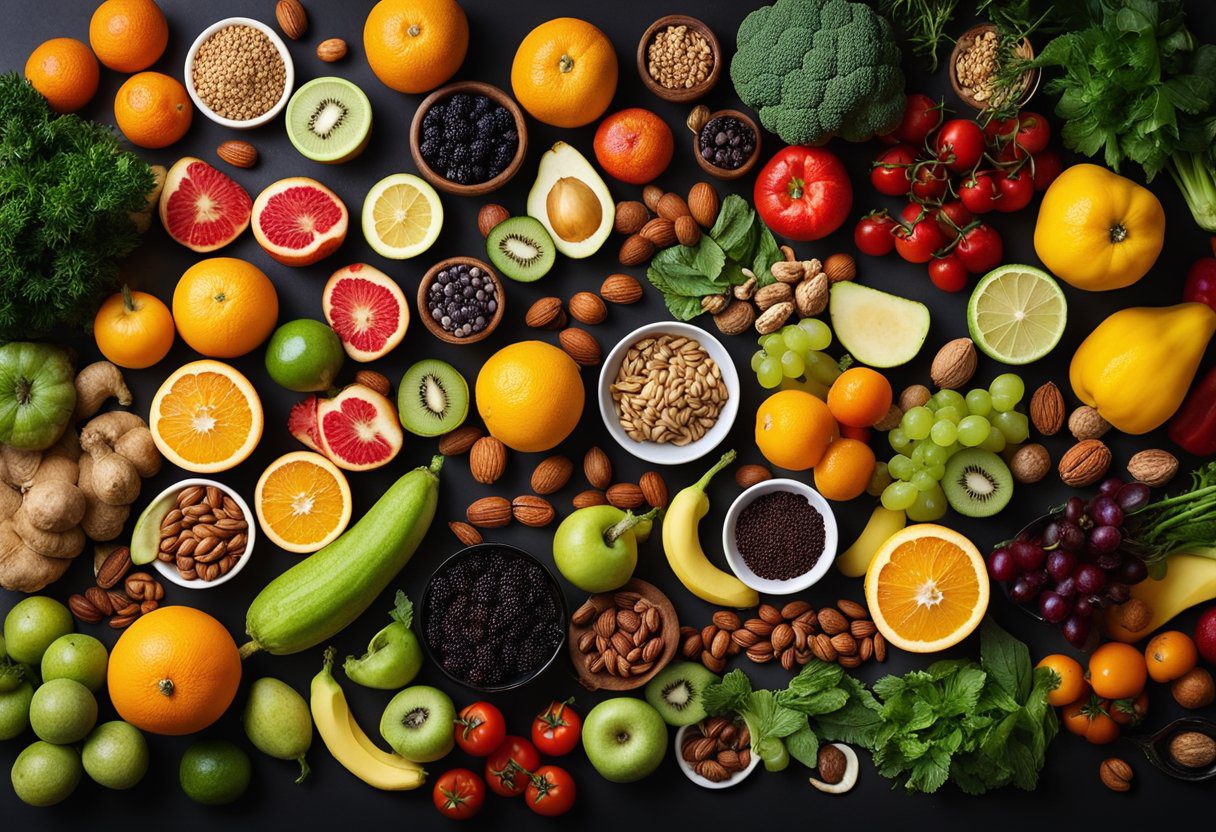
Implementing an anti-inflammatory diet can seem daunting at first, but with a little planning and preparation, it can be easily incorporated into a daily routine. Here are some tips for meal planning and recipes, as well as shopping and cooking.
Practical Implementation: 7-Day Anti-Inflammatory Meal Plan
Daily food frequency targets:
– Fatty fish 3–4x/week (total: 2–4g daily EPA/DHA) – 7–9 servings vegetables/fruits daily
– ¼ cup nuts or 2 Tbsp seeds daily
– 2–4 Tbsp extra virgin olive oil daily
– Diverse legumes, whole grains, herbs/spices
Sample Day (Monday):
– Breakfast: Overnight oats (rolled oats, blueberries, walnuts, flaxseed, cinnamon, almond milk)[11[11]]
– Snack: Apple with almond butter
– Lunch: Mediterranean chickpea salad (greens, cherry tomatoes, cucumber, olive oil, parsley, turmeric)
– Snack: Greek yogurt + raspberries + chia seeds
– Dinner: Baked wild salmon, roasted sweet potato, steamed broccoli with turmeric, quinoa, salad with olive oil vinaigrette
Macros: ~2,000 kcal, 46g fiber, ~2g EPA+DHA
Meal prepping tips:
– Batch cook grains, proteins, and roasted veggies weekly
– Portion nuts/seeds and berries for grab-and-go snacks
– Freeze prepared dishes; use glass containers for best nutrient preservation
Budget swaps:
– Use canned fish (sardines, salmon) and frozen berries
– Buy grains and legumes in bulk; shop seasonal produce
For full plan: Repeat structure with different fish, legumes, vegetables, and spices each day. Rotate berry types, greens, and nuts for maximum benefit and diversity.
Anti-Inflammatory Grocery Shopping Template
Produce (Bulk of Cart):
– Dark leafy greens: kale, spinach, Swiss chard, arugula
– Cruciferous: broccoli, cauliflower, Brussels sprouts, cabbage
– Colorful vegetables: bell peppers, tomatoes, carrots, sweet potatoes
– Allium family: onions, garlic, leeks
– Fresh herbs: parsley, basil, rosemary, thyme
– Fresh/frozen berries: blueberries, raspberries, strawberries, blackberries
– Citrus: lemons, limes, oranges, grapefruit
– Other fruits: apples, pears, avocados
Protein:
– Fatty fish: wild salmon, sardines, mackerel (fresh/canned)
– Seafood: cod, shrimp, mussels
– Plant proteins: organic tofu, tempeh, beans, lentils, edamame
– Eggs (pasture-raised/omega-3)
Grains & Legumes:
– Quinoa, brown rice, oats, farro, barley
– 100% whole wheat bread, wholegrain pasta
– Lentils, black beans, chickpeas, white beans (dried and canned)
Healthy Fats:
– Extra virgin olive oil
– Avocado oil
– Nuts: walnuts, almonds, pecans
– Seeds: chia, flaxseed, pumpkin
Spices:
– Turmeric, ginger, cinnamon, cumin, garlic powder, black pepper
Cooking Strategies
– Steam: Preserves most vitamins and polyphenols (great for veggies/fish)
– Sauté: Medium heat, olive oil, for onions, garlic, greens
– Bake: 325–350°F for proteins and root vegetables (avoid dark charring)
– Marinate: Olive oil, lemon, and fresh herbs before grilling reduces harmful compounds
– Raw: Berries, greens, and nuts/seeds for highest antioxidant content
Restaurant Survival Guide
– Order grilled fish, hummus, Mediterranean salads, bean-based sides
– Choose olive oil or vinaigrette for dressing
– Ask for more vegetables and substitute sides (skip fries)
– Avoid: fried foods, creamy dressings, processed meats
Frequently Asked Questions
What foods are recommended to reduce bodily inflammation?
An anti-inflammatory diet is comprised of whole, nutrient-dense foods that provide the body with essential vitamins, minerals, and antioxidants. Foods that are high in omega-3 fatty acids, such as salmon, sardines, and chia seeds, are recommended to reduce inflammation. Additionally, fruits and vegetables, especially dark leafy greens and berries, are known for their anti-inflammatory properties.
Which foods should be avoided to prevent inflammation?
Processed foods, refined carbohydrates, and trans fats should be avoided as they are known to trigger inflammation in the body. Additionally, consuming high amounts of sugar and saturated fats can also increase inflammation.
Can you list ten foods known for their anti-inflammatory properties?
How does the Mediterranean diet contribute to reducing inflammation?
The Mediterranean diet, which is rich in fruits, vegetables, whole grains, legumes, and healthy fats, has been shown to reduce inflammation in the body. The diet is high in antioxidants and anti-inflammatory compounds, such as omega-3 fatty acids and polyphenols, which can help to reduce inflammation.
What dietary changes can benefit individuals with arthritis to manage inflammation?
Individuals with arthritis can benefit from consuming an anti-inflammatory diet that is rich in whole, nutrient-dense foods. Foods that are high in omega-3 fatty acids, such as fatty fish, can help to reduce inflammation. Additionally, consuming a diet that is rich in fruits and vegetables can provide the body with essential vitamins, minerals, and antioxidants that can help to reduce inflammation.
How fast can I expect results?
– Digestive and energy improvements: within 2–3 weeks of diet change
– Biomarker reductions (CRP, IL-6): 8–12 weeks
– Joint symptom improvements (arthritis/autoimmune): 3–6 months with consistent omega-3/fiber/plant-based diet[1[1],2[2],6[6]]
Is this way of eating safe during pregnancy and breastfeeding?
Yes, with some caveats:
– Fish: Focus on low-mercury (salmon, sardines; avoid swordfish/tilefish), 8–12oz per week – Omega-3: Prenatal DHA supplement is recommended
– Herbs: Use spices in food amounts, but do not take concentrated supplements[15][16]
Can children follow this diet?
Yes—just adapt portions for age and calorie needs, and avoid supplements without professional advice. Emphasize a variety of plant foods, healthy fats, and whole grains for healthy growth[21[20]].
Is it expensive?
Not necessarily—frozen vegetables/berries are just as nutritious, canned beans/fish are affordable, and bulk grains/legumes are less than $1/serving. Proper planning reduces waste, and health savings far outweigh small price differences over time[21[20]].
What’s the best anti-inflammatory diet pattern for most people?
The Mediterranean diet—with lots of produce, fish, nuts, olive oil, and legumes—has the most robust evidence for long-term health[7[7],11[11]].
Conclusion
By focusing on abundant plant foods, consistent omega-3 intake, healthy fats, and reducing processed choices, you can reliably lower inflammation—supported by research from randomized trials, cohort studies, and clinical guidelines[1[1],2[2],6[6],7[7],11[11]].
Use the practical recipes, prep tips, and pattern comparisons above to start today.
References
- Impact of anti-inflammatory diets on cardiovascular disease risk factors: a systematic review and meta-analysis. https://pmc.ncbi.nlm.nih.gov/articles/PMC11965126/ Accessed November 7, 2025
- Effects of Dietary Patterns on Biomarkers of Inflammation and Immune Responses: A Systematic Review and Meta-Analysis of Randomized Controlled Trials. https://pubmed.ncbi.nlm.nih.gov/34607347/ Accessed November 7, 2025
- Omega-3 Fatty Acids and Inflammatory Processes. https://pmc.ncbi.nlm.nih.gov/articles/PMC3257651/ Accessed November 7, 2025
- Resolvins, Specialized Pro-Resolving Lipid Mediators and their Potential Roles in Metabolic Diseases. https://pmc.ncbi.nlm.nih.gov/articles/PMC3947989/ Accessed November 7, 2025
- Specialized pro-resolving mediators: endogenous regulators of infection and inflammation. https://www.nature.com/articles/nri.2015.4 Accessed November 7, 2025
- Mediterranean diet and rheumatoid arthritis: A nine-year cohort study and systematic review with meta-analysis. https://www.nature.com/articles/s41430-025-01628-8 Accessed November 7, 2025
- What is the Mediterranean Diet?. https://www.heart.org/en/healthy-living/healthy-eating/eat-smart/nutrition-basics/mediterranean-diet Accessed November 7, 2025
- Here's how 10 popular diets scored for heart health. https://www.heart.org/en/news/2023/04/27/heres-how-10-popular-diets-scored-for-heart-health Accessed November 7, 2025
- Frontiers. https://www.frontiersin.org/journals/nutrition/articles/10.3389/fnut.2024.1456730/full Accessed November 7, 2025
- Long-term dietary patterns are associated with pro-inflammatory and anti-inflammatory features of the gut microbiome. https://gut.bmj.com/content/70/7/1287 Accessed November 7, 2025
- Mediterranean Diet: Food List & Meal Plan. https://my.clevelandclinic.org/health/articles/16037-mediterranean-diet Accessed November 7, 2025
- Flavonoids as Potential Anti-Inflammatory Molecules: A Review. https://pmc.ncbi.nlm.nih.gov/articles/PMC9100260/ Accessed November 7, 2025
- JCI - Resolvins in inflammation: emergence of the pro-resolving superfamily of mediators. https://www.jci.org/articles/view/97943 Accessed November 7, 2025
- Investigating Bioavailability of Curcumin and Piperine Combination in Comparison to Turmeric Rhizomes: An in vitro Study. https://pmc.ncbi.nlm.nih.gov/articles/PMC10838102/ Accessed November 7, 2025
- 15. https://www.bfr.bund.de/cm/349/curcumin-in-food-supplements-acceptable-daily-intake-may-be-exceeded.pdf Accessed November 7, 2025
- Perspective: The Dietary Inflammatory Index (DII)—Lessons Learned, Improvements Made, and Future Directions. https://pmc.ncbi.nlm.nih.gov/articles/PMC6416047/ Accessed November 7, 2025
- Frontiers. https://www.frontiersin.org/journals/nutrition/articles/10.3389/fnut.2024.1383040/full Accessed November 7, 2025
- Just a moment.... https://academic.oup.com/ecco-jcc/article/18/6/920/7475690 Accessed November 7, 2025
- Exploring the association between dietary Inflammatory Index and chronic pain in US adults using NHANES 1999–2004. https://www.nature.com/articles/s41598-024-58030-w Accessed November 7, 2025
- Anti-inflammatory meal prep for beginners. https://arthritis.ca/healthy-living/anti-inflammatory-meal-prep-for-beginners/ Accessed November 7, 2025
- Just a moment.... https://pubs.acs.org/doi/10.1021/acsomega.1c01952 Accessed November 7, 2025
- Specialized Pro-resolving Mediators as Modulators of Immune Responses. https://pmc.ncbi.nlm.nih.gov/articles/PMC9962762/ Accessed November 7, 2025
